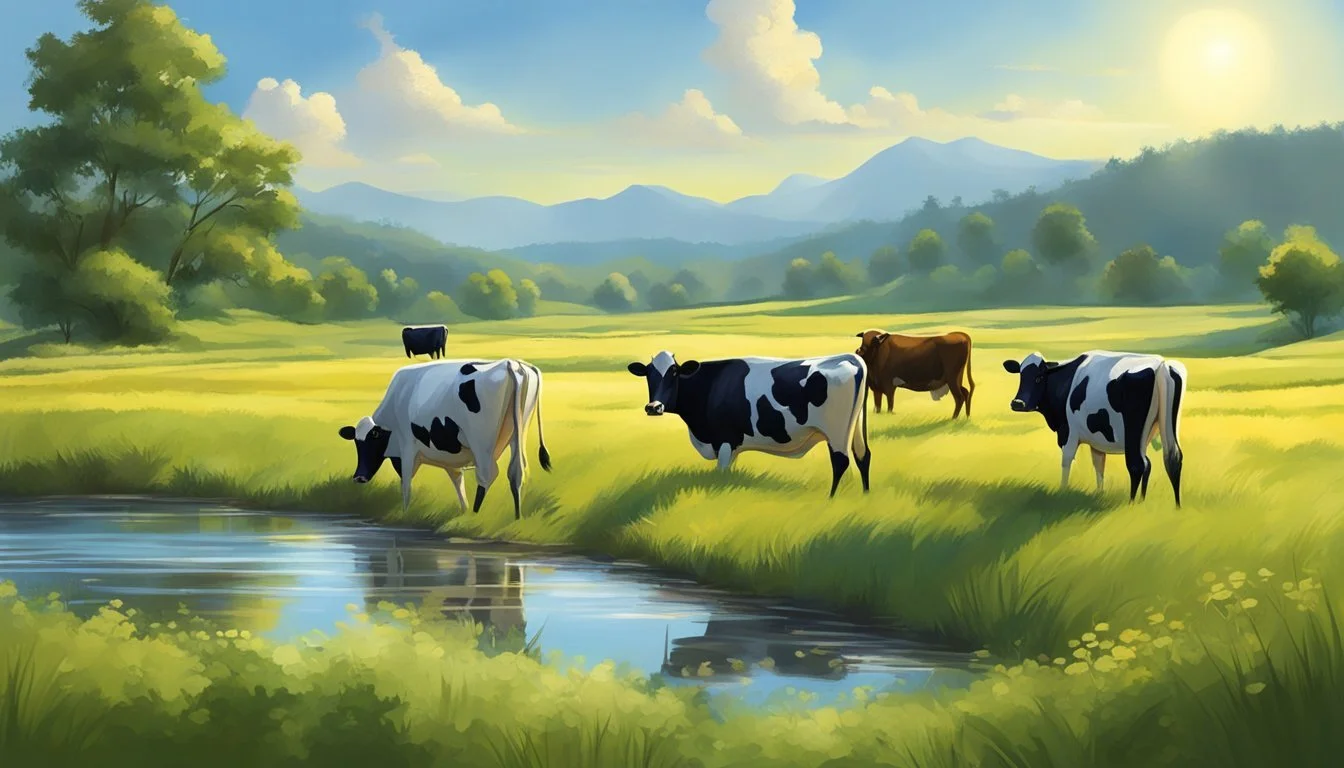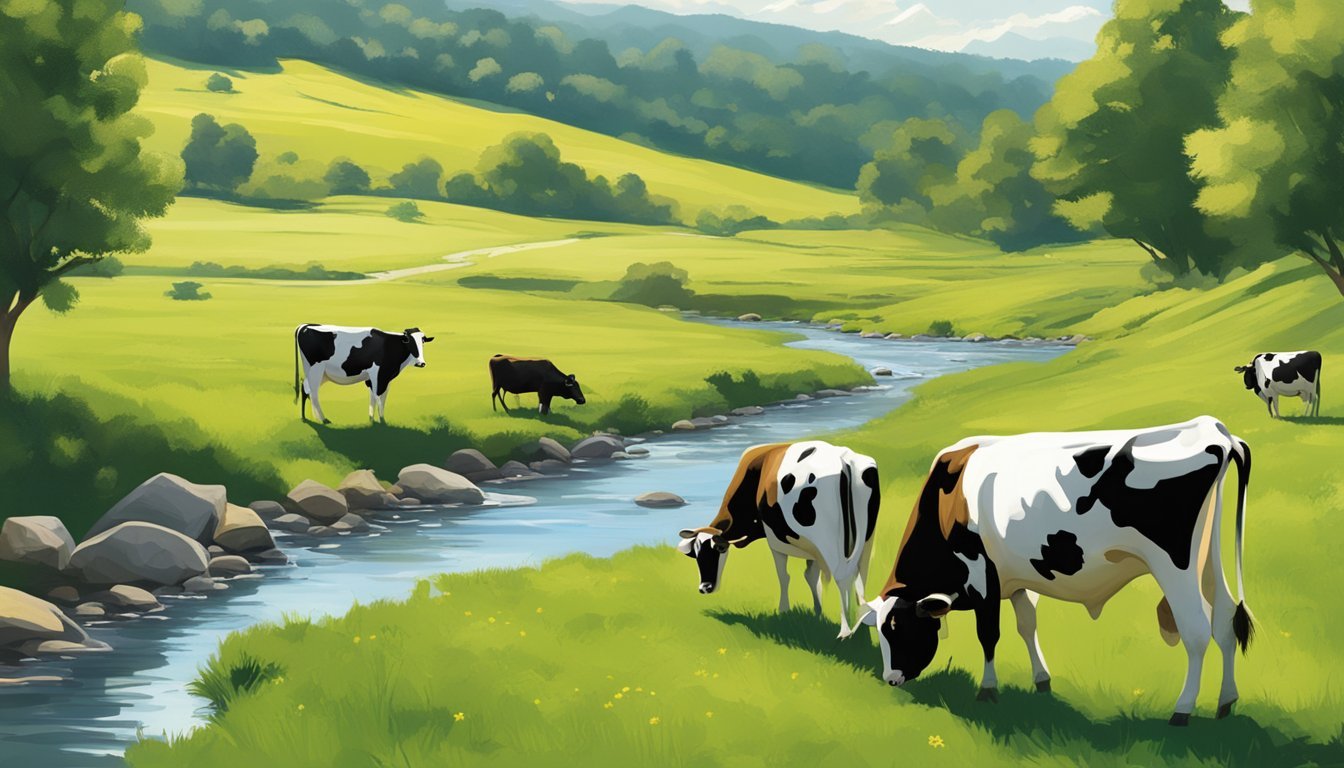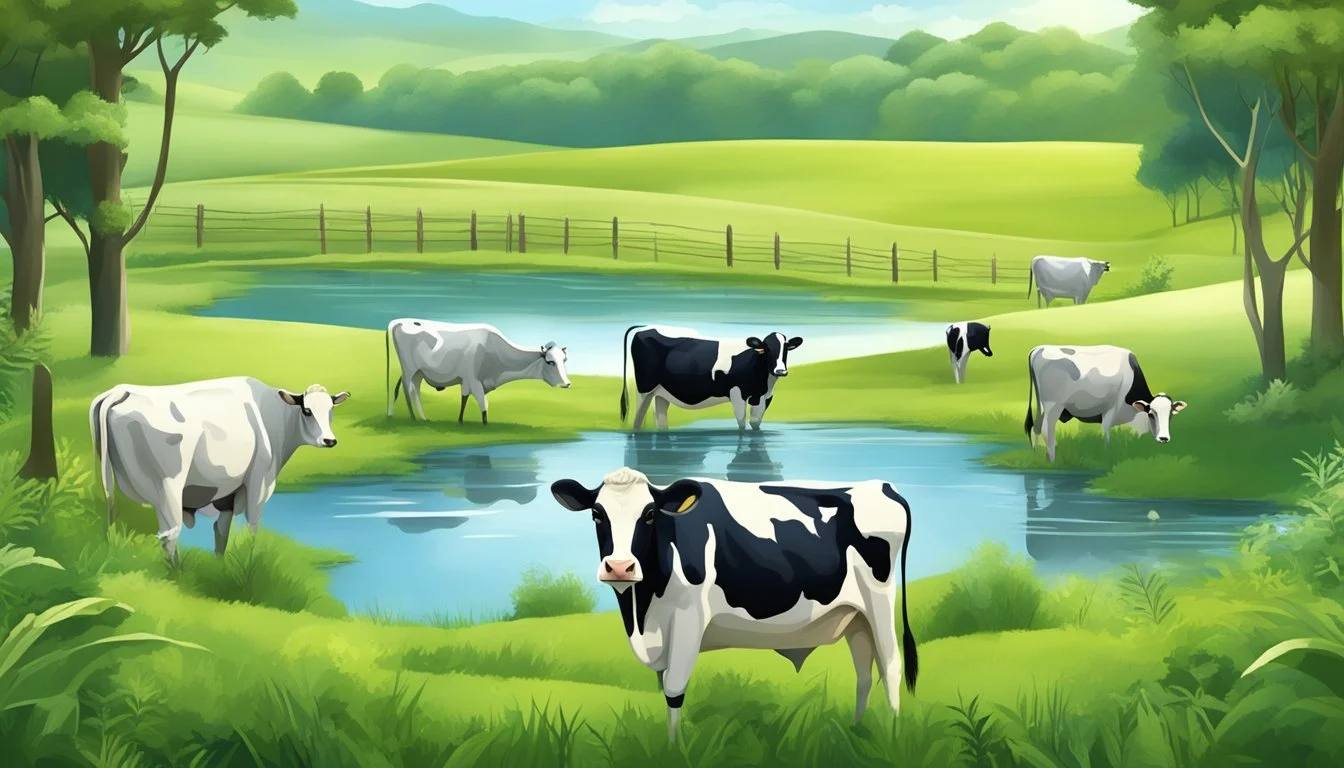The Ethics of Raw Milk Consumption
Balancing Animal Welfare and Human Health Concerns
The consumption of raw milk has sparked a multifaceted debate that balances the scales of ethical animal welfare and human health concerns. Public attitudes in the European Union show that a significant majority of citizens consider animal welfare to be a major concern, with many advocating for stricter protections than currently in place. These heightened ethical considerations intersect with consumer choices, like the burgeoning interest in organic and non-processed foods. The move towards raw milk consumption is sometimes portrayed as a more 'natural' choice, reflecting a stance against industrialized farming practices, and is believed by some to be more aligned with enhancing and respecting the welfare of dairy animals.
However, the rise in popularity of raw milk is juxtaposed with serious considerations about food safety. Statistically, raw milk has been linked to numerous outbreaks of foodborne illnesses. Despite this, some studies and proponents suggest potential health benefits of raw milk, such as reduced risks of asthma, allergies, and atopic eczema. Yet, health experts caution that the microbial risks associated with unpasteurized milk can lead to severe health outcomes. The ethical dilemma deepens when considering consumer autonomy and the right to choose, weighed against the responsibility of ensuring public health.
These complexities require a nuanced understanding of the ethical implications behind raw milk consumption. Policymakers, consumers, and producers must navigate the terrain of ethical food production, animal welfare, and public health. The discourse extends beyond individual preference into a broader analysis of the responsibilities and values that shape our food systems. The ethical and health dimensions of raw milk consumption are, therefore, not only matters of personal choice but also reflect wider societal values and scientific understanding.
The ethics of raw milk consumption encompass a thoughtful consideration of various factors, including addressing prevalent raw milk safety myths and advocating for an informed understanding of the product. Advocates of raw milk emphasize its potential to provide a natural and unprocessed option for individuals with raw milk lactose intolerance and its versatility in culinary applications, such as making raw milk butter.
Introducing a raw milk diet involves a conscientious approach to sourcing and production, highlighting the importance of engaging with the insights and experiences of those involved in the industry. A raw milk farmer interview can offer valuable perspectives on the ethical considerations and care involved in raw milk production, fostering a deeper connection between consumers and the source of their dairy products.
By promoting transparency, education, and advocacy, the ethics of raw milk consumption can align with the principles of informed choice and responsible agricultural practices, offering consumers the opportunity to make conscientious decisions about their dietary preferences while supporting sustainable and ethical farming methods.
The Basics of Raw Milk
Raw milk is a contentious topic, balancing possible health benefits against health risks. This section will discuss the fundamentals of raw milk, from its definition to how it's produced.
Understanding Raw Milk
Raw milk refers to milk straight from the dairy animal, most commonly cows, goats, or sheep, that has not undergone pasteurization—a process of heating the milk to a temperature that kills harmful bacteria. Advocates claim that raw milk contains beneficial nutrients and enzymes that are reduced or eliminated during pasteurization. However, consuming raw milk also carries the risk of exposure to pathogenic microorganisms.
Production and Processing of Raw Milk
The production of raw milk involves extracting milk from dairy animals under hygienic conditions to minimize contamination. Once collected, the milk is typically filtered and cooled.
Hygiene: High standards of cleanliness are crucial at every stage, from the animal's skin to the milking equipment.
Storage: Raw milk must be stored at 40°F (4°C) or below to retard bacterial growth.
Regulation: The sale of raw milk is governed by state laws, which vary widely in the United States.
Unlike raw milk, pasteurized milk has been heated to a temperature that destroys most harmful bacteria, a process that substantially reduces the risk of illness from milk consumption. The pasteurization process is standardized to ensure safety without significantly altering the nutritional profile of the milk.
Animal Welfare Considerations
When examining the ethics of raw milk consumption, the welfare of dairy cows becomes a pivotal aspect. This section scrutinizes how animal health is managed on dairy farms, the standards governing animal care, and the conditions under which livestock graze and live.
Animal Health and Dairy Farming
Dairy farming directly impacts animal health. Cows must be kept in good health to ensure the quality of milk production. Poor health can result from inadequate diets, unsanitary living conditions, and overmilking. Proactive health management practices include routine veterinary check-ups and vaccinations to prevent diseases. It's imperative that cows receive immediate care for any health issues to avoid undue suffering and the compromise of milk quality.
Standards in Animal Care
Animal care standards are essential for securing farm animal welfare. There are regulatory guidelines and certifications that dairy farms can follow and obtain, such as the Animal Welfare Approved or Certified Humane programs, which encompass aspects of living space, diet, and handling procedures. Adhering to these standards ensures a baseline of humane treatment and support for the cow's physical and psychological well-being.
Grazing and Livestock Conditions
Grazing plays a crucial role in the health and welfare of dairy cows. Livestock that have access to open pastures for grazing as opposed to being confined in cramped, indoor spaces typically exhibit better physical fitness, less stress, and natural social behaviors. Additionally, pasture-raised cows can contribute to sustainable farming practices that help maintain the overall ecological balance.
Human Health Impacts
The consumption of raw milk affects human health in various ways, from its nutritional makeup to the potential for disease transmission. It is imperative to understand both the benefits and risks to public health posed by raw milk.
Nutrient Profile of Raw Milk
Raw milk is known for its high-quality protein and essential nutrients such as bioavailable calcium. These nutritional components are necessary for human development and maintaining healthy bones.
Potential Health Risks
The consumption of raw milk carries with it potential health risks, mainly stemming from zoonotic diseases. Pathogens such as E. coli, Salmonella, and Listeria can be present in raw milk and pose serious health risks. Moreover, raw milk can be a vector for tuberculosis and brucellosis, diseases that have significant public health implications.
Diseases and Raw Milk Consumption
Zoonotic diseases are of particular concern when it comes to raw milk. Brucellosis and tuberculosis, both transmissible through raw milk, can have severe health consequences. Public health authorities often emphasize pasteurization as a means to eradicate these pathogens.
Health Benefits Debate
There is an ongoing debate regarding the health benefits of raw milk consumption. Some studies suggest that raw milk can reduce the incidence of allergies, asthma, and atopic eczema, especially when consumed early in life. However, while there might be anecdotal evidence and some support for these benefits, they have to be weighed against the associated public health risks.
Environmental and Sustainability Issues
The production and consumption of raw milk are tied to environmental concerns, primarily revolving around agricultural emissions and the broader ecological footprint.
Agricultural Practices and Emissions
Raw milk production begins with dairy farming, an agricultural practice that significantly contributes to environmental emissions. Dairy cows produce methane, a potent greenhouse gas with a substantial impact on climate change. According to the Food and Agriculture Organization (FAO), livestock represents about 14.5% of all human-induced emissions, with cattle constituting the largest share. Intensive dairy farming practices can also lead to biodiversity loss, as land is cleared for pasture or crop production to feed cattle, disrupting local ecosystems.
Efforts to promote sustainability in dairy farming include the adoption of carbon-reducing agricultural practices such as precision feeding, manure management, and improved breeding techniques to enhance milk yield per cow while reducing the number of animals required.
Raw Milk's Environmental Footprint
The environmental footprint of raw milk encompasses not only emissions from cattle but also the resources used in farming, such as water for hydration of animals and cleaning of facilities, and energy for milk cooling and transportation. Packaging and transport of raw milk, especially when not regulated efficiently, can increase its carbon footprint further due to the energy required to maintain its unprocessed state.
To mitigate these impacts, the dairy industry looks toward solutions such as renewable energy sources, reducing water usage, and improving supply chain logistics. Sustainable practices strive to balance the ecological costs with economic viability, aiming to create systems that safeguard biodiversity and reduce the role of dairy in climate change.
Ethics and Socioeconomic Aspects
In exploring the ethics of raw milk consumption, it is crucial to understand the interaction between ethical principles and dairy consumption, the economic factors influencing the dairy industry, and the consumer perception that guides market trends. These dimensions collectively shape the landscape of dairy ethics and socioeconomic outcomes.
Ethical Principles and Dairy Consumption
Ethical considerations in dairy consumption revolve around animal welfare, sustainable food production practices, and health implications for humans. The values that guide ethical dairy consumption include humane treatment of animals and preference for higher welfare food products which are often tied to organic production methods. Consumers who prioritize ethics may opt for milk that reflects care for animal well-being and adherence to principles of natural feeding and non-confinement.
Economic Factors in Dairy Industry
Economic factors heavily influence the dairy industry's viability, which hinges on profit and capitalism dynamics. Local and sustainable food production often conflicts with large-scale operations geared towards maximizing profits. Economies of scale in the conventional dairy sector can overlook ethical and health aspects, while small-scale producers who emphasize sharing values and sustainable practices may struggle to remain competitive.
Consumer Perception and Market Trends
Consumer attitudes and emotions play a significant role in shaping the demand for ethical and healthy dairy options, including raw milk. The trend towards more sustainable and ethical consumption has prompted a rise in demand for organic and local dairy products. This shift indicates a growing segment that values food ethics and is willing to support systems that offer transparency and higher welfare food products. However, these consumer perceptions are balanced by concerns about food safety and regulatory standards for raw milk.
Regulatory and Safety Standards
The regulatory and safety standards for raw milk aim to balance the health benefits with potential risks, ensuring that consumers are protected while also supporting the choices of those who prefer raw dairy products.
Food Safety and Public Health Regulations
Food safety and public health authorities have established stringent regulations for the dairy industry to minimize the risks associated with raw milk consumption. In the United States, the FDA forbids the interstate sale of raw milk for human consumption, whilst each state has its own laws ranging from outright bans to restricted sales. A core component of these regulations is the testing for pathogens such as Salmonella, E. coli, and Listeria, which are common concerns with raw milk.
To ensure safety, regulations often require:
Regular inspection of dairy farms.
Monitoring cow health to prevent diseases like brucellosis and tuberculosis.
Compliance with hygiene standards during milking, storage, and transport.
Producers must adhere to these standards to reduce the 30% risk of respiratory infections and fevers associated with raw milk, as indicated by scientific evidence.
Labelling and Consumer Information
Labelling requirements for raw milk are vital for informed consumer choice and risk awareness. Labels must clearly indicate that the milk is raw and may provide storage instructions to maintain quality and safety. The information provided on labels is regulated to ensure clarity and to avoid misleading health claims.
Key components on raw milk labels include:
"Raw Milk": Prominent display of the product's raw status.
Storage Instructions: Guidelines on how to keep the milk at safe temperatures.
Health Risk Notice: Warnings about potential health risks, particularly for vulnerable populations such as young children, pregnant women, the elderly, and immunocompromised individuals.
By informing consumers through clear labelling, regulatory entities aim to protect public health while respecting individual dietary choices.





